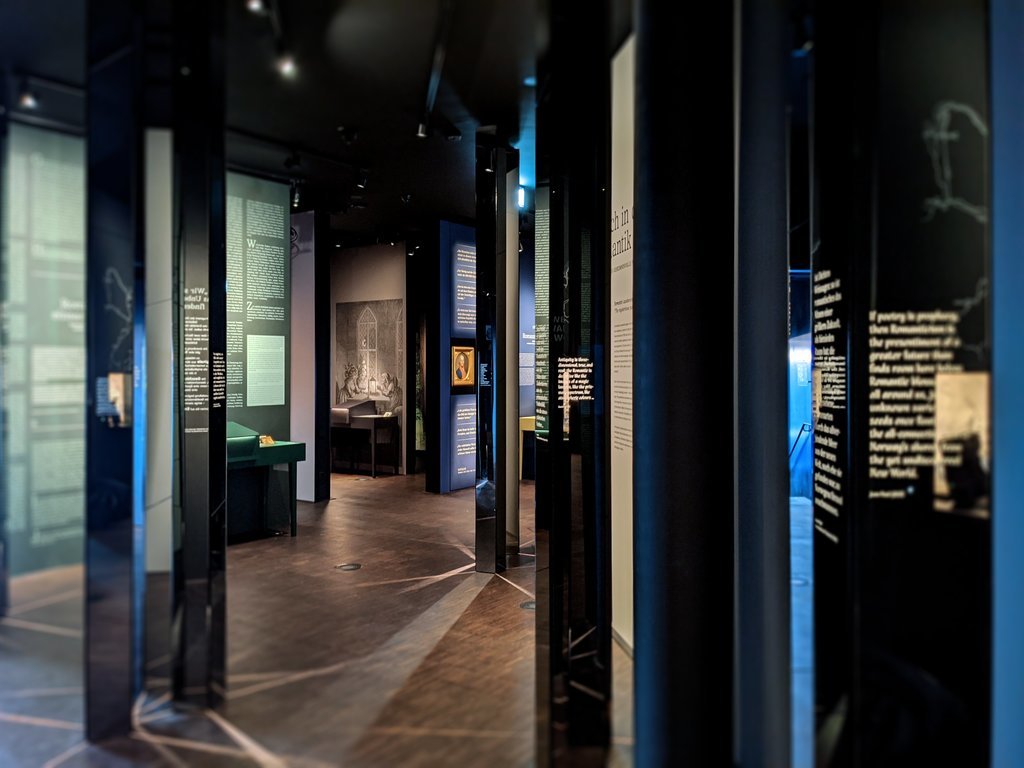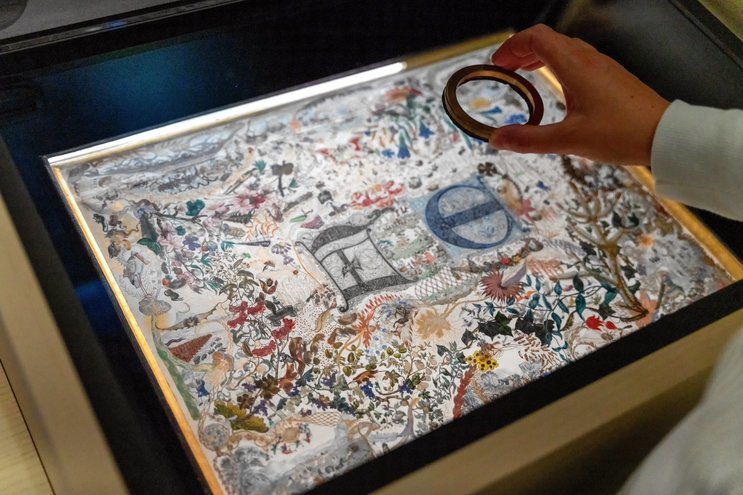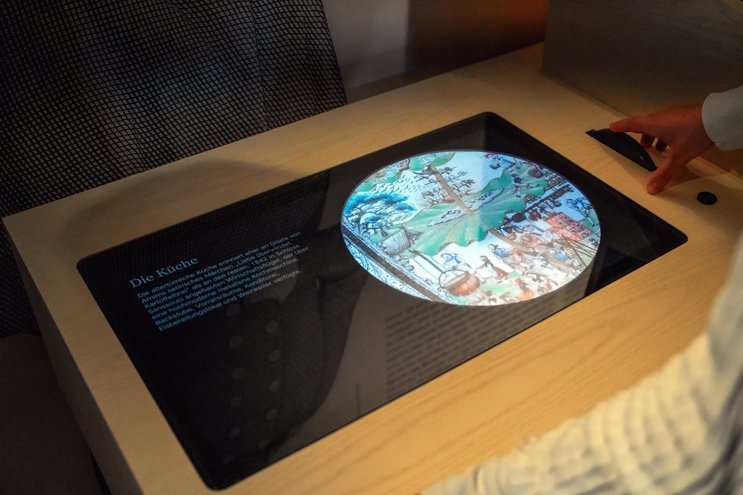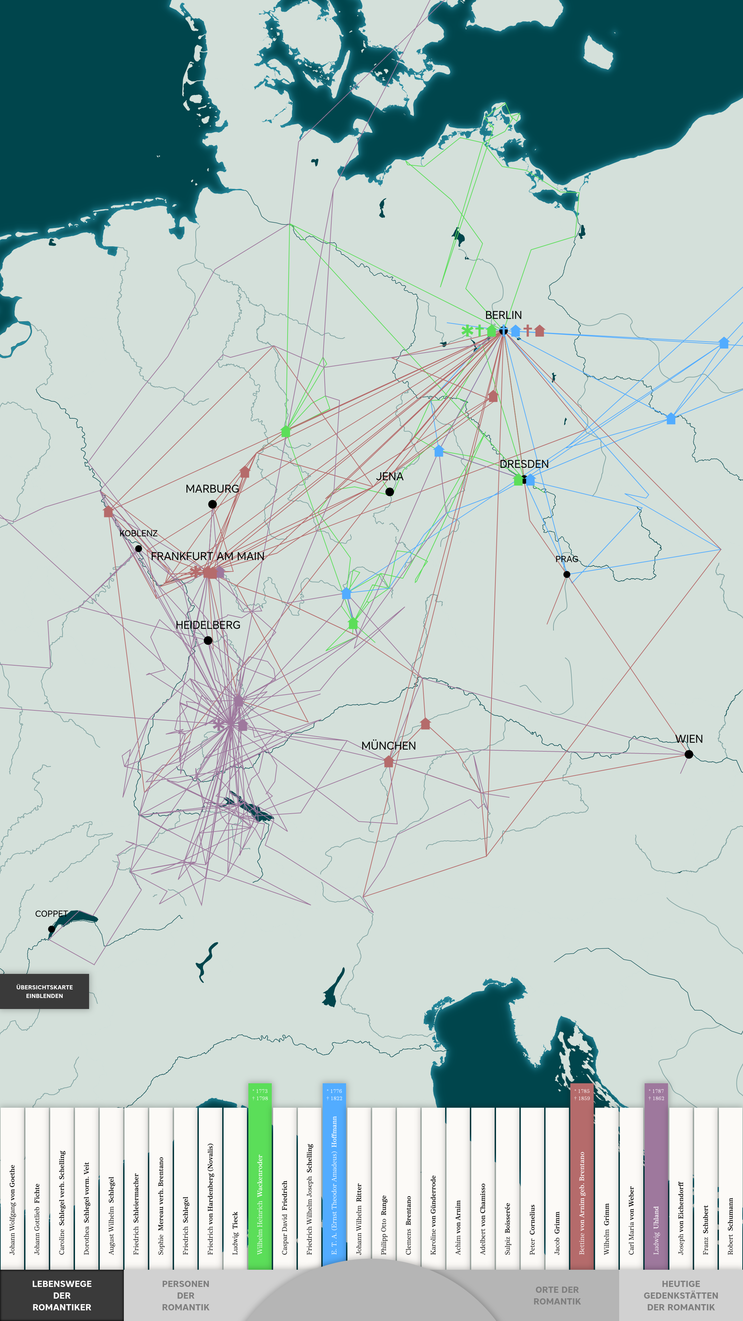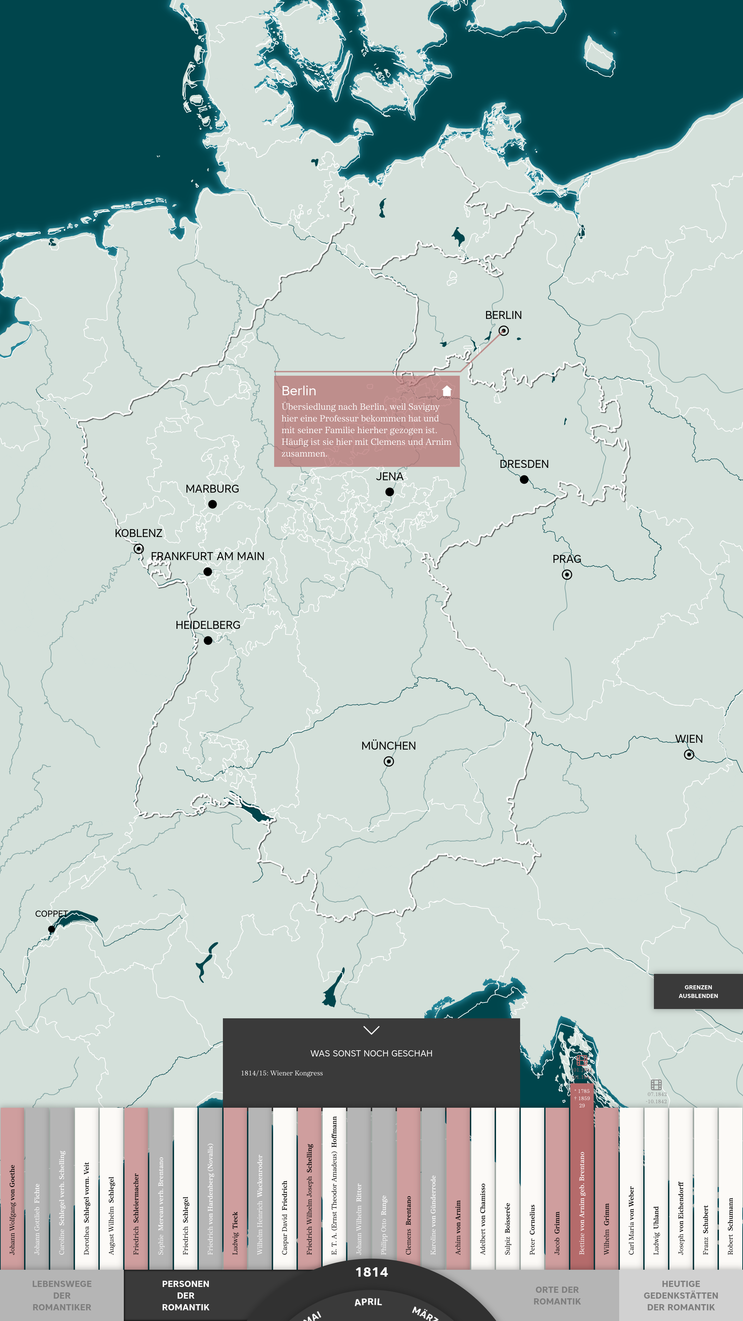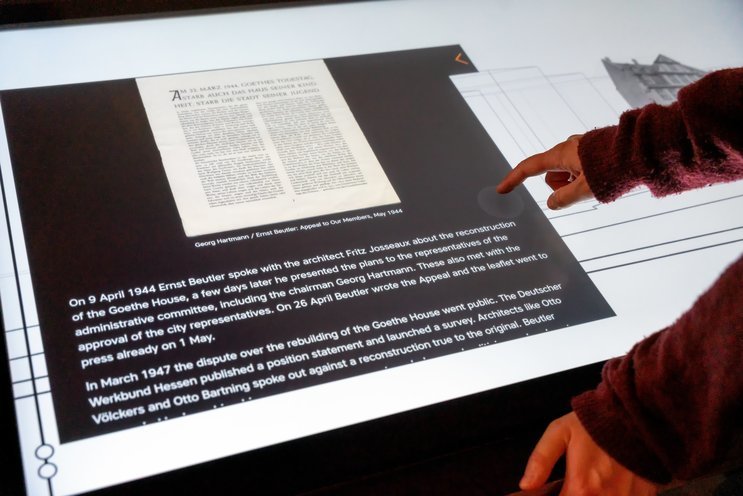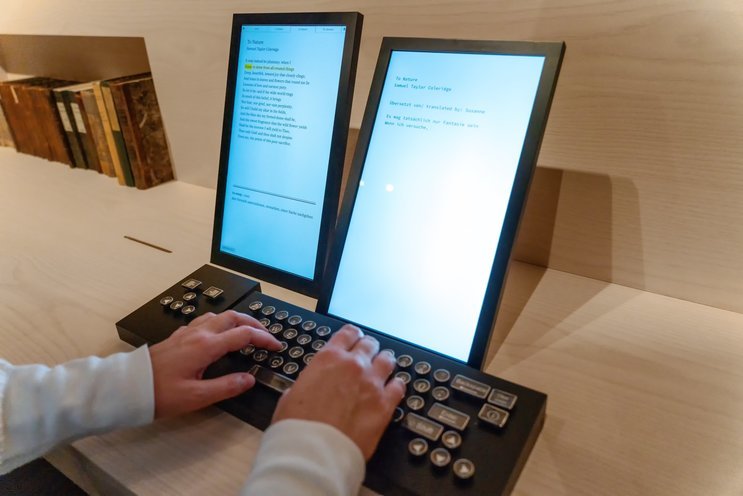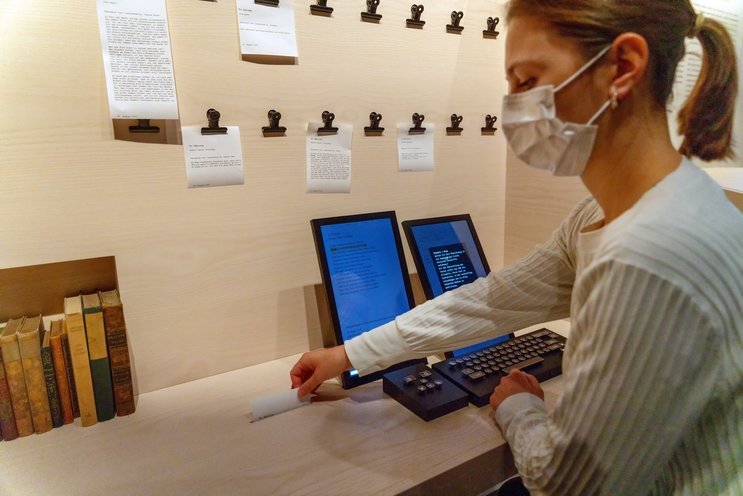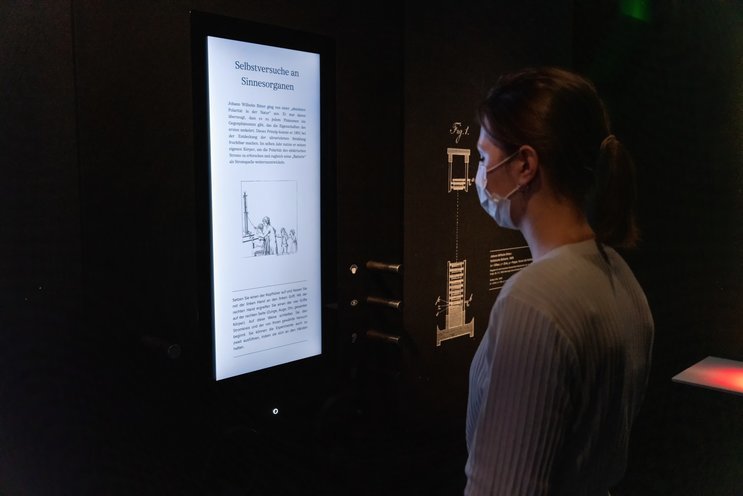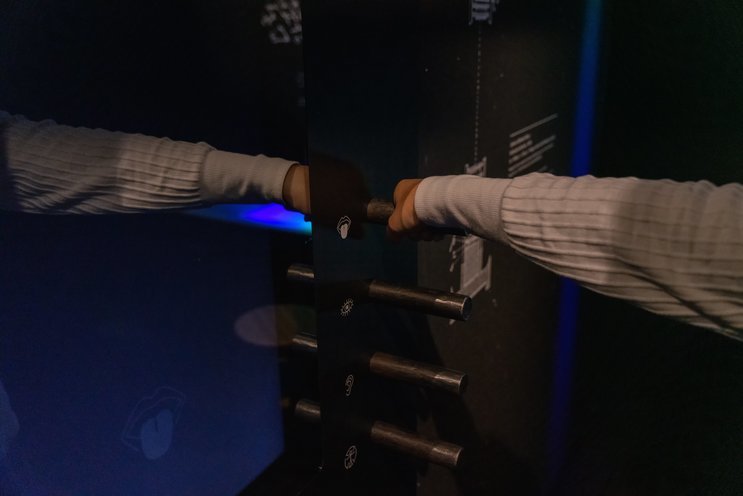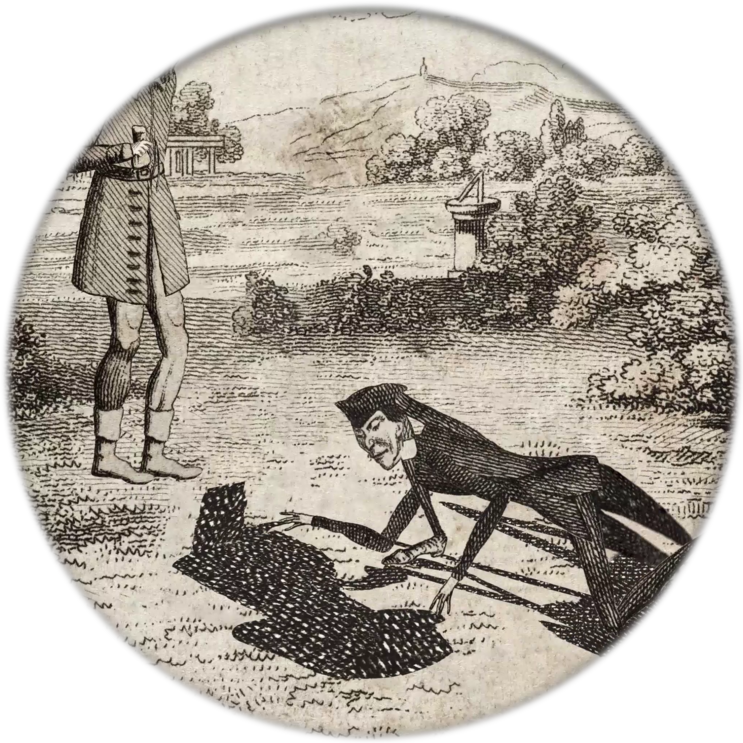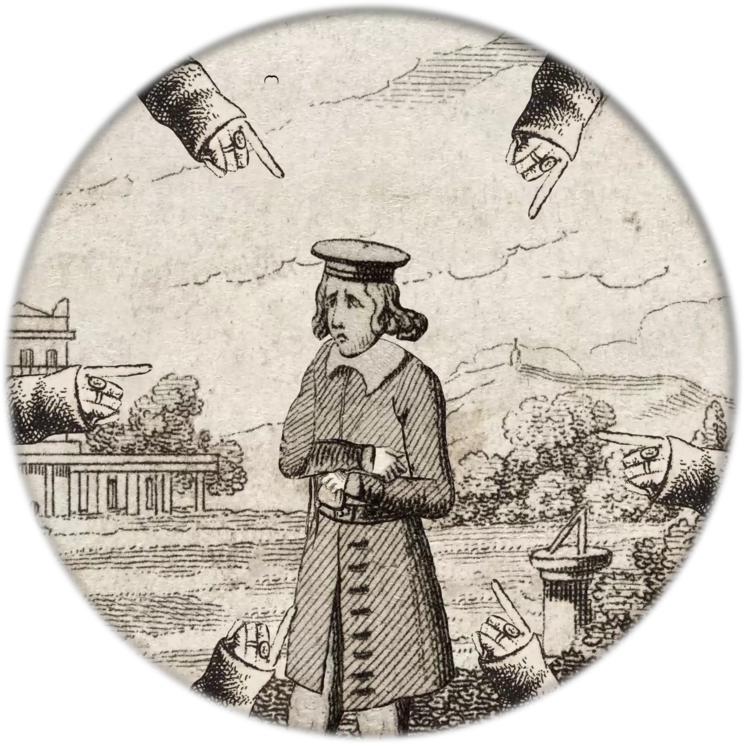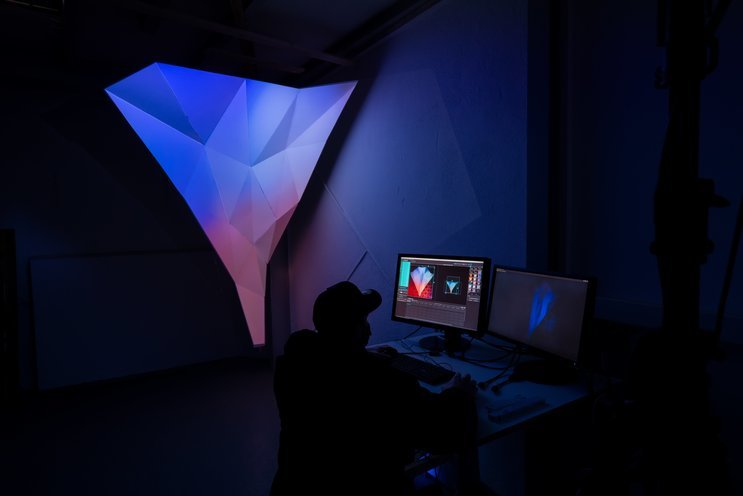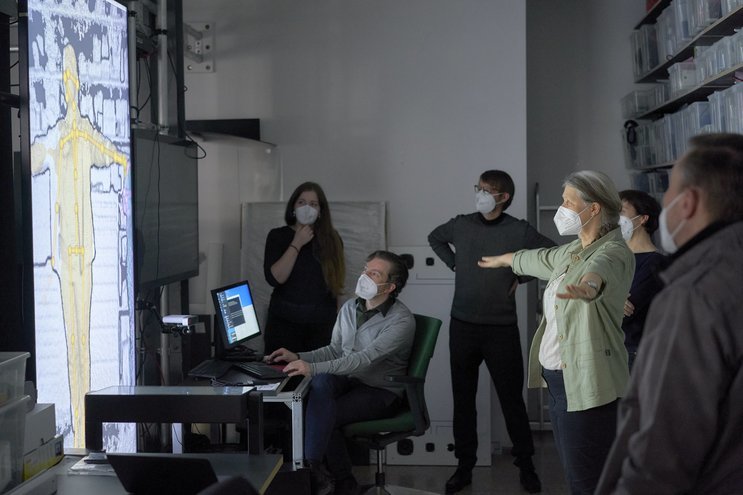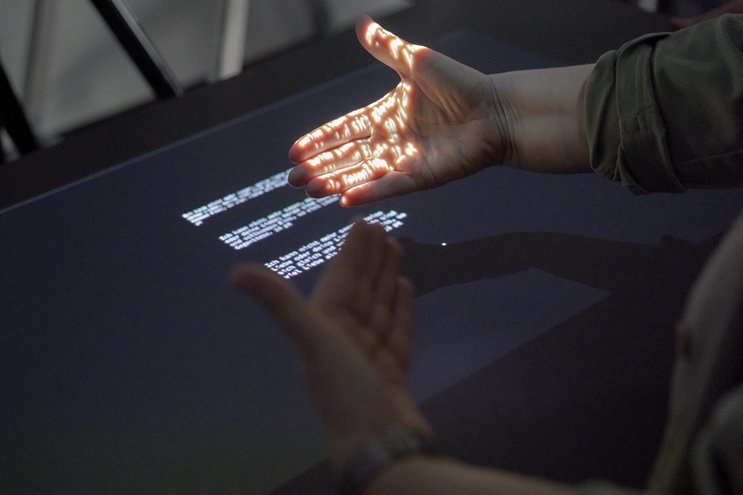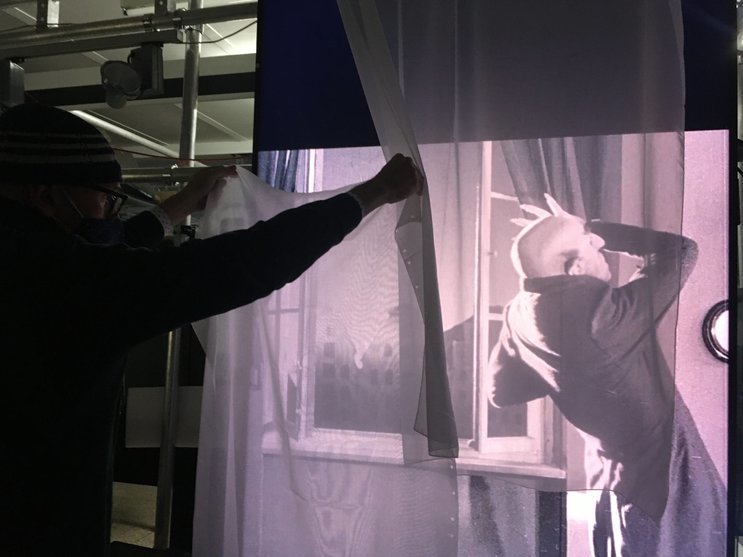With the new German Romantic-Museum, the city of Frankfurt gained another cultural attraction of international relevance. From an early stage, we were put in charge of the media infrastructure of this major project. Together with the scenographers from Sounds of Silence, we developed over 40 individual media stations from concept to implementation and coordinated external creatives, manufacturers and suppliers as the main technical consultant.
A new cultural flagship
An epoch reveices a home
Right next to the historic Frankfurter Goethe Haus, a new cultural site invites visitors to dive into the world of German Romanticism. Over the past 100 years, the Freies Deutsches Hochstift has compiled an unprecedented collection on this epoch. This wealth of knowledge, artworks and objects was now turned into a permament exhibition on 800 sqm – for citizens, tourists, educators, experts, researchers and school classes alike.
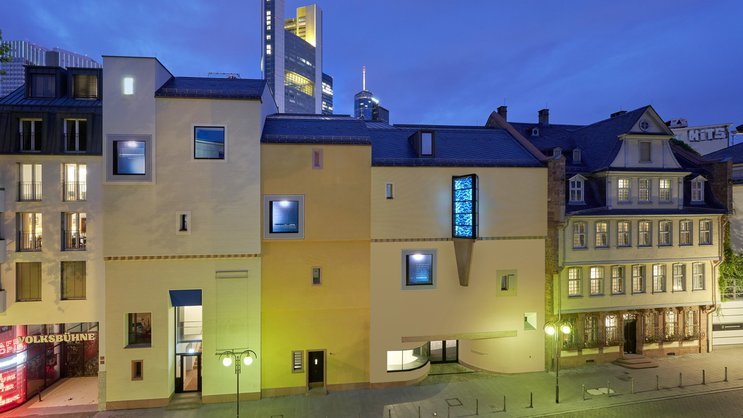
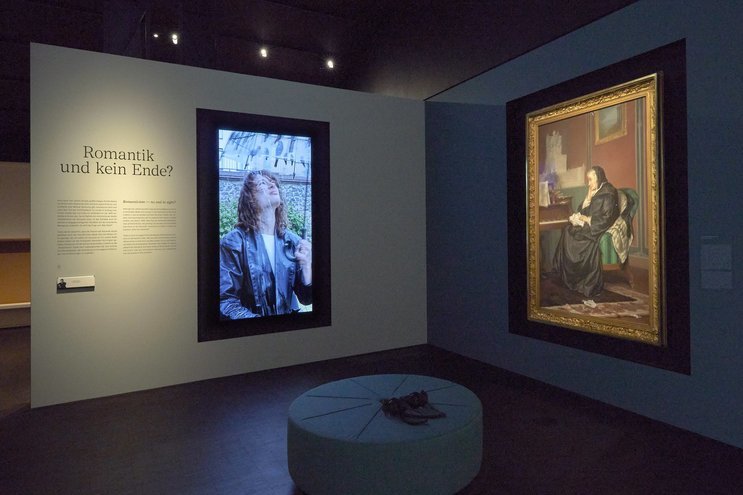
The new Romantic Museum follows an innovative approach, merging scenographic interventions with physical exhibits, audiovisual media formats and complex interactive installations. Together with the scenographers from Sounds of Silence and the architects from Mäckler Architekten we designed, developed and built over 40 individual stations for the exhibition parcours.
We are proud our expertise in innovative media solutions helped this unique project take shape.
The museum is built upon years of research and the knowledge of numerous curators and experts. Exhibits ranged from simple audio players to highly data driven research exhibits. Therefore, we were dealing with an exceptional amount of content that was growing and evolving during the realisation phase. To grant our client maximum flexibility and independence, we set up a bespoke content management system. All data, text and media are stored and edited in this one place, making updates easy and allowing a clear overview.
Historical content, new media
Credibility and experience
The collection of Freies Deutsches Hochstift comprises an exceptional amount of original handwritten documents and letters, of books, drawings and sketches. As unique as these items might be, they are not easy to turn into an exciting and multifaceted exhibition – not only because they are difficult to read also because they need to be protected from light and stored safely in display cases.
Together with the scenographers and curators, we have developed numerous tailor-made solutions. The aim was always to emphasize the magic of the works of art and not to belittle it with technical gadgets. Authenticity and scientific accuracy are embedded in playfully light digital levels of storytelling, research and laboratory setup. All media exhibits were individually tailored to the topic, which required a deep understanding of the subject matter and close cooperation with the museum's experts.
A digital magnifying glass
Despite its small format, Armgard von Arnim’s “Huldigungsarabeske” is cluttered with details, strange figures and objects that demand for further explanation. With a smart combination of physical and digital, we developed a media installation that adds an interactive layer for exploration of the delicate artwork.
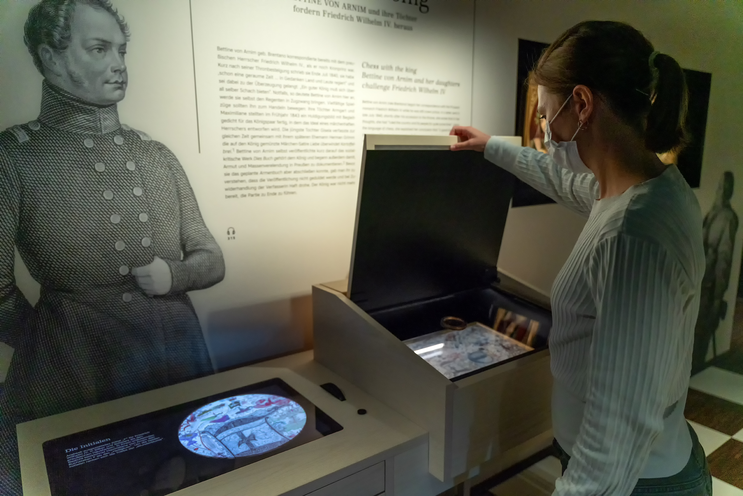
The original arabesque is presented safely inside a showcase. A golden ring can be moved across the glass. The chosen part of the picture appears as a digital magnification on a screen. It is accompanied by the curators’ comments on the motifs, and can be zoomed in and out using a wheel.
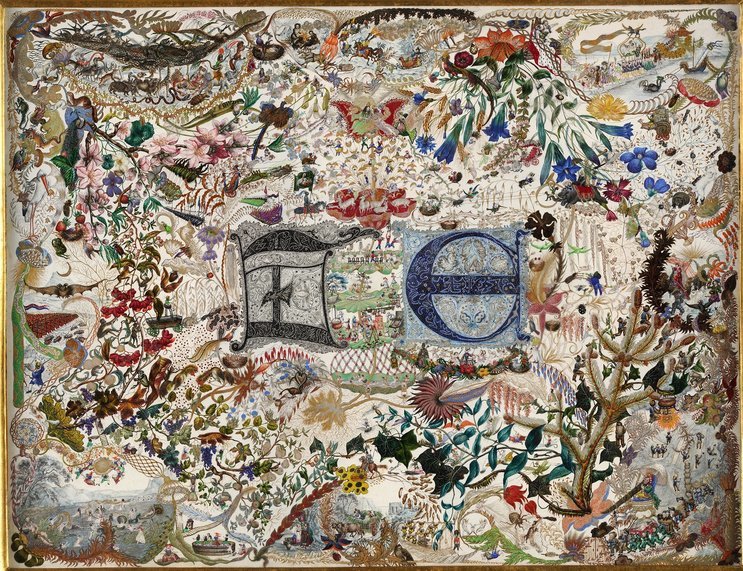
For this exhibit, we fitted the showcase with an infrared touch-frame to track the position of the ring. It is measured and a matching high-res scan of the original artwork is shown. Background information from the content management system is linked to the individual motives.

Illustrations explained
“Des Knaben Wunderhorn” [The Youth’s Magic Horn] is a famous anthology collected by the Achim von Arnim and Clemens Brentano. All books were published with cover illustrations full of historical cross-references. To be able to explain and highlight these elements, a media exhibit accompanies the original book. Visitors can dive into the illustrations, explore the details and learn about the context in depth.

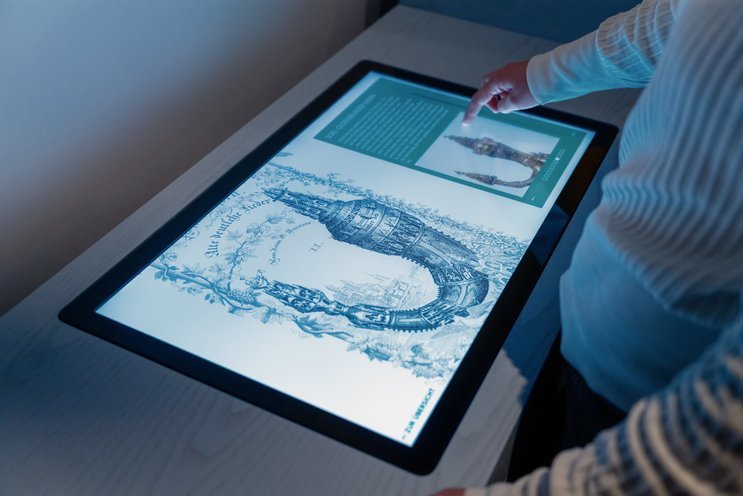
Life journeys in split seconds
The interactive map is a centerpiece of the new museum and brings together the results of several research projects of Freies Deutsches Hochstift. It visualizes the era of Romanticism by tracing the journeys and stages of life of its protagonists and highlighting their epicentres. It creates references to other memorials of the Romantic era and is both a collaborative research tool and an interactive anchor point for guided tours. In an extensive concept phase, we supported the museum’s curators and researchers in filtering and organizing the wealth of information and translating it into a pedagogical approach. Based on numerous data sets that were researched from diaries, correspondence and border crossing documents, the lives of over 30 historical people over a period of 134 years have been brought together in an interactive experience. An accompanying website shows other protagonists and additional data visualizations.
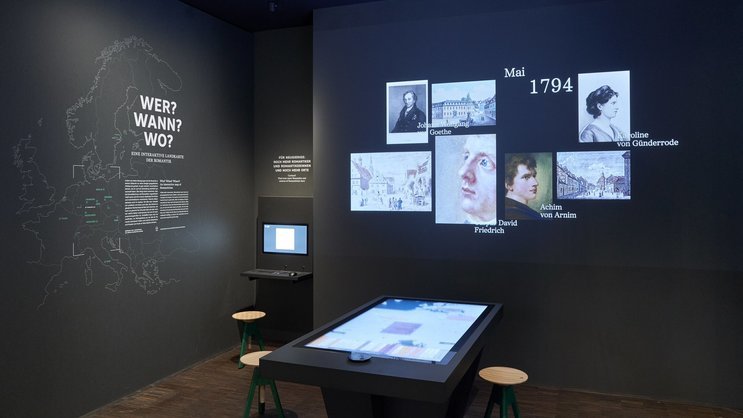
The centerpiece of the media station is a touch screen table fitted with a custom rotary knob to scroll through time. It always depicts a map – but with changing borders and four individual modes selectable by touch to display the information desired. A wall projection adds images and bold information accordingly.
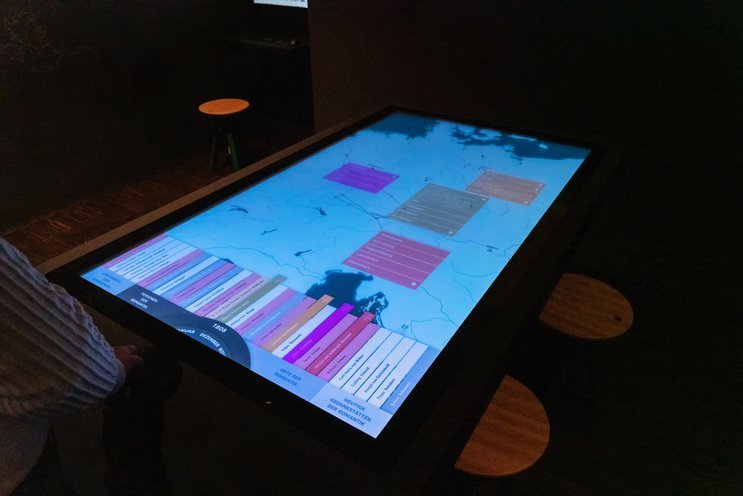
The main mode focuses on the protagonists of Romanticism their whereabouts, their encounters and their travelling. Up to four persons can be selected at once via an interactive keyboard, learning where they were and why at a spedific point in time. Turning the rotary knob sets the protagonists in motion and visitors can follow their path.
By switching the modes, visitors also can either display an overview of the protagonists’ lives, explore the most important cities of the epoch over time and who resided there or learn about the places where we commemorate Romanticism today.
A Firewall through the centuries
The new building of the German Romantic-Museum is directly attached to the historic Goethe-Haus. The shared fire wall is visible from the museum’s foyer and in itself a relevant artefact.
We developed a media station giving context to this architectural highlight.
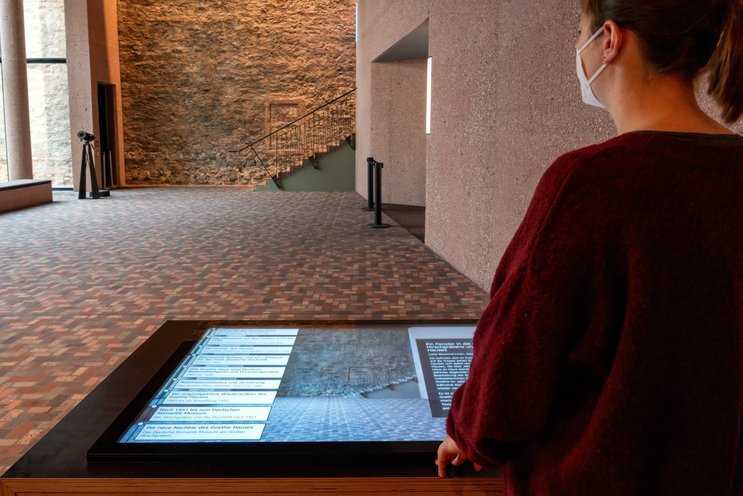
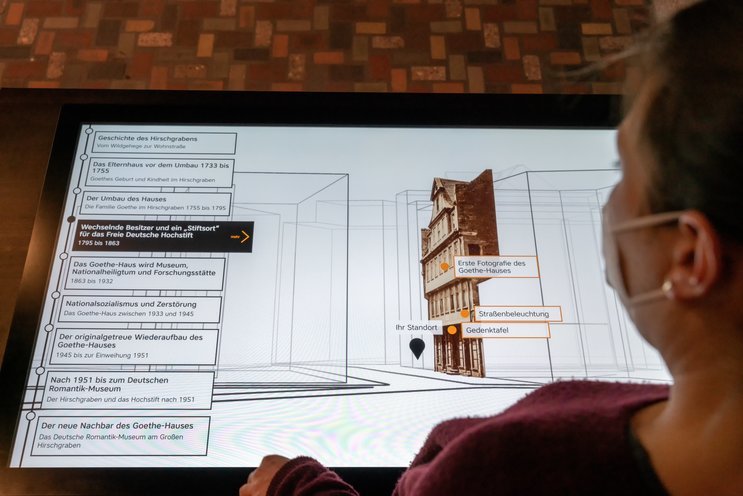
On a large touch screen, visitors can navigate through time, visiting different epochs the Goethe-Haus whitnessed from the 18th century until today.
Historic drawings and photos are placed into an abstract grid model of the neighbourhood, lending orientation and allowing to smoothly switch between perspectives.
An article on each epoch introduces the reader to the historic background. With a wealth of images, a vivid picture is painted.
The perpectives of the Goethe-Haus are complemented by hotspots. On touch, these reveal information on specific details, from architectural changes to people to anecdotes.
Getting involved
The museum as a workshop
Visitors of the Romantik-Museum should not only consume information but also experience the content hands-on. Therefore, we developed a number of media stations that require active involvement.
collective translation agency
Writing is an artform – and so is translating literature into other languages. Friedrich Schleiermacher was one of the first translators. Visitors have the opportunity to play with their linguistic talent at a special exhibit.
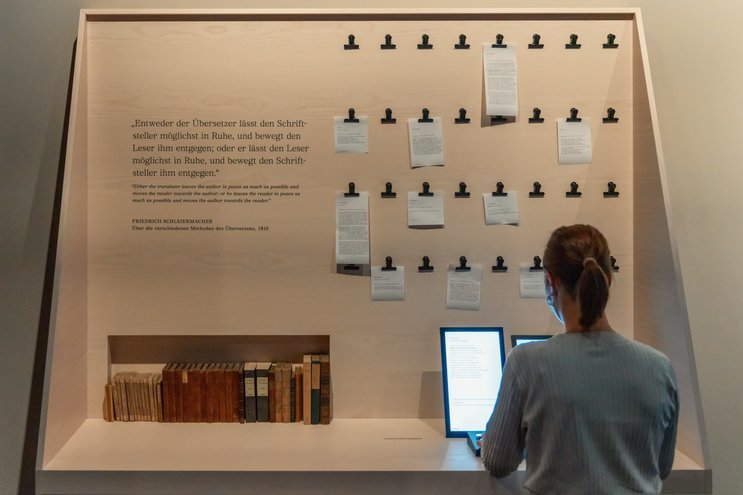
The set-up consists of two monitors a printer:
A portrait format monitor with a bespoke mechanical keyboard resembles a typewriter. Here visitors can type their individual translation.
The second screen shows a selection of original poems and also offers help via a curated thesaurus.
The personal translation can be printed at the push of a button and added to the collection on the wall. Visitors can also choose to send their work to the museum’s digital archive.
Electrified
Johann Wilhelm Ritter carried out pioneering experiments in the field of electricity by using his own body as a measuring device for sometimes life-threatening electrical currents. In the Deutsche Romantik Museum, these experiments are retold in a completely harmless way: When the visitors grasp two metal handles with their hands, a circuit is closed, which starts Ritter’s reports on his self-experiments. Here, too, a current flows through the visitors’ bodies, but it only starts a reading of Ritter's test protocols on headphones. Various handles allow visitors to safely relive his dangerous experiments on his eyes, ears, stomach and other parts of the body.
Artistic technology
Spatial media interventions
We developed a number of immersive installations that add entirely new communication formats to the exhibition parcours and blend in with the architecture.
The invention of horror fiction
Five friends and writers came together at Villa Diodati, an estate at Lake Geneva. Because of poor weather, in June 1816 the group famously spent three days together inside the house creating stories to tell each other, two of which were developed into landmark works: “Frankenstein” by Mary Shelley and “The Vampyre” by Polidori. Numerous movies have picked up on the novels, but also on the history of their origin.
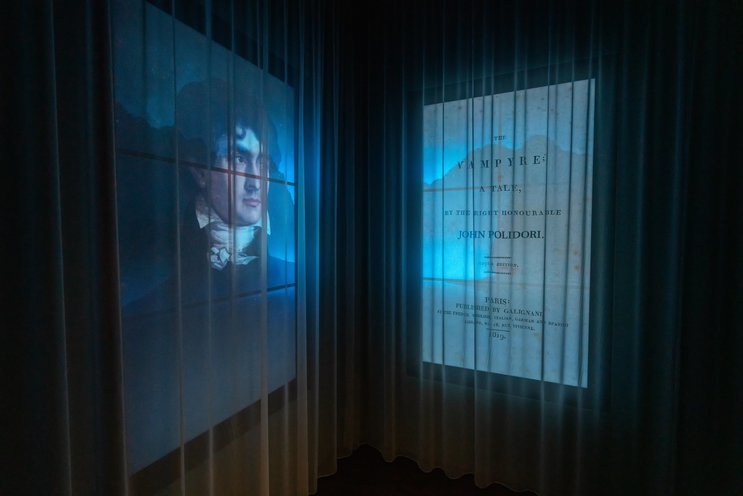
An immersive media installation shut off from the rest of the exhibition by thick curtains brings the gathering and its creations to life. Two 86" 4K monitors serve as digital windows, opening up the view into a stormy night and letting visitors dive into the atmosphere at Villa Diodati. Scenes from historic and contemporary movies appear and disappear against this backdrop, shifting between reality and fiction.
We developed the visual concept and took care of video editing, production and integration as well as of sound design. Out team also installed a motion sensor so that visitors automatically trigger the smooth switch from idle-mode to the actual show.
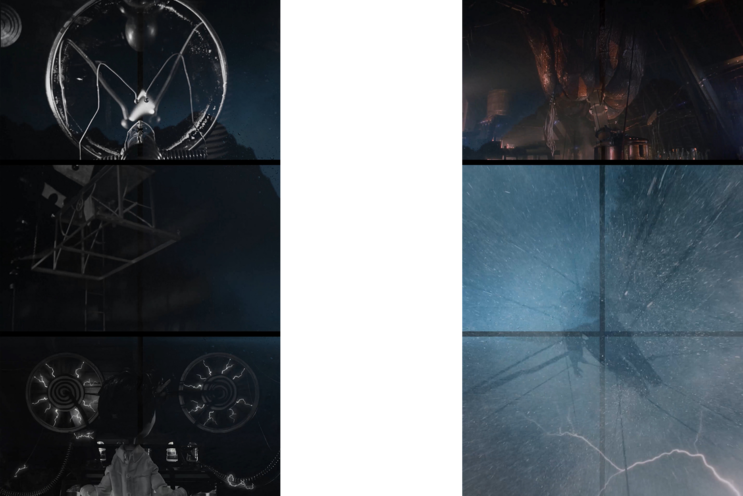
Fine art and complex forms
Philipp Otto Runge created a famous cycle of arabesques exploring “The Times of the Day”. At the museum, this work of art is interpreted by setting it in motion on a sculptural canvas.
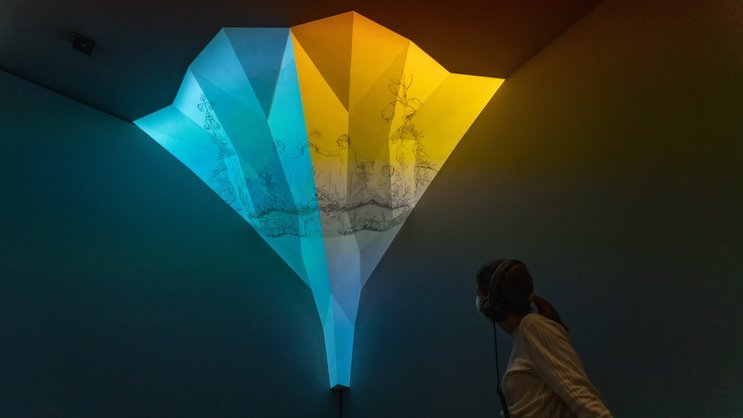
Color scheme meets animated drawing
© MESO / Constantin Urban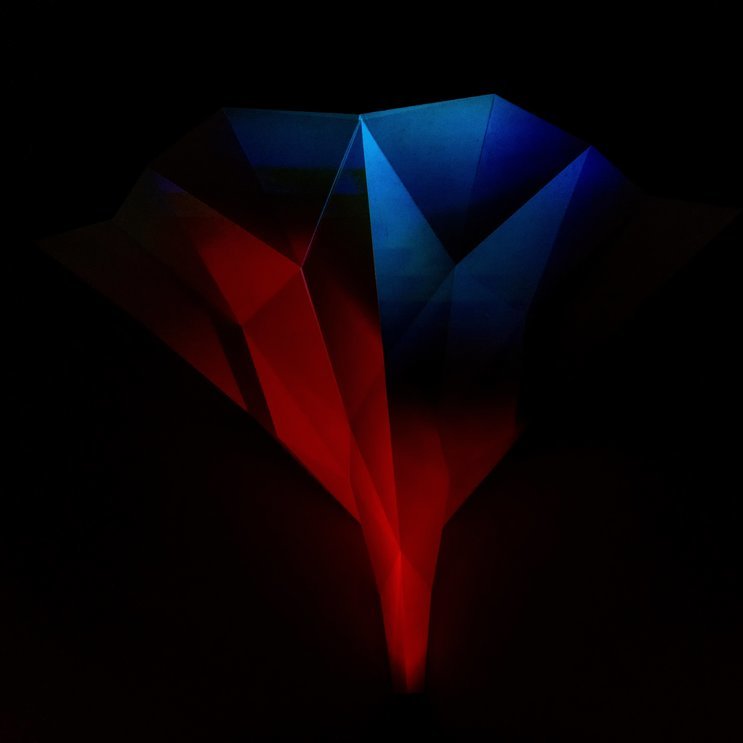
Artist Dani Muno turned Runge’s drawings into contemplative animations which we then combined with moving color gradients representing the mood of the morning, day, evening and night. The videoloop is projected onto a complex, polygonal body, seemingly emerging from the corner of the room.
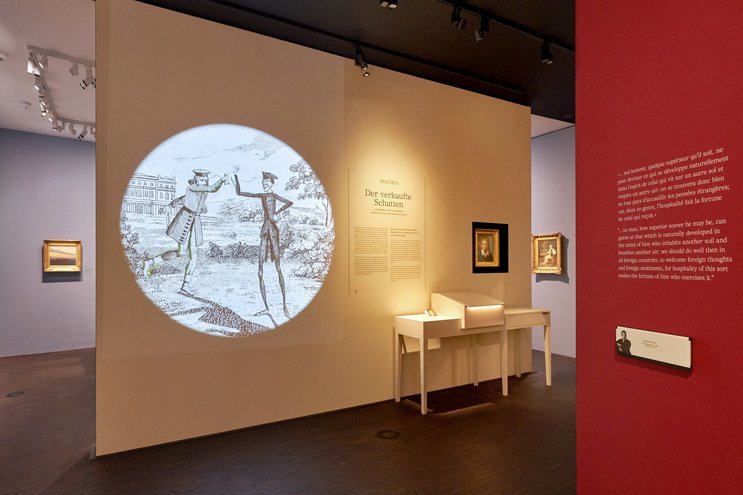
Illustration in Motion
Adelbert von Chamisso’s story of Peter Schlemiehl who sells his shadow to the devil for a bag of gold is brought to life in an interactive projection. We worked with artist Merlin Flügel to turn the historical illustrations by George Cruikshank into a fun and minimalist animation. Visitors (involuntarily) trigger the switch from idle mode to video playback via person recognition, adding an element of surprise to the installation.
Making-of
Related Projects
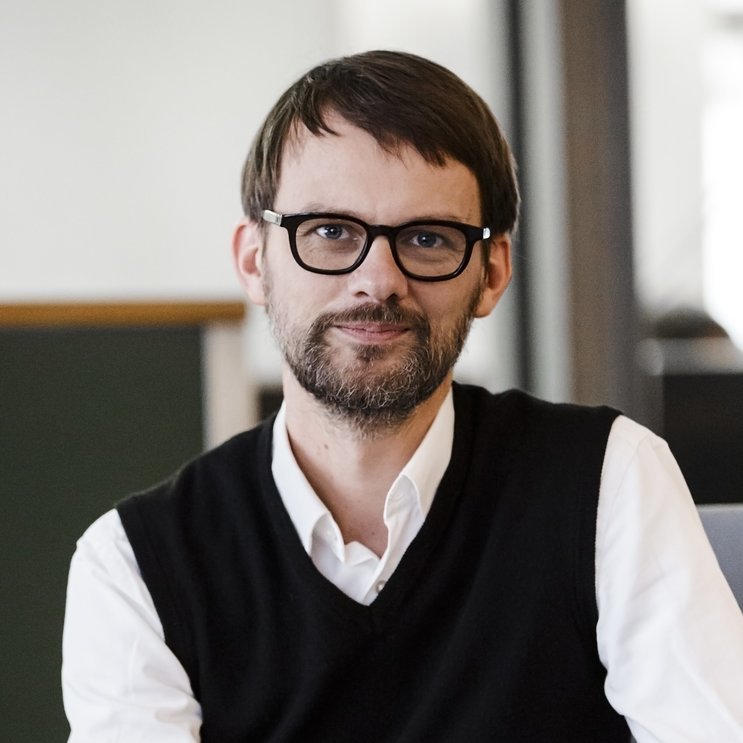
Curious about our approach? Feel free to get in touch!
Sebastian Oschatz Partner +49 69 24 000 321 sebastian.oschatz@meso.design sebastian.oschatz@meso.design +49 69 24 000 321
MESO Digital Interiors GmbH
Gutleutstr. 96 . 60329 Frankfurt . Germany
Team
Davide Becker, Bettina Braun, Theron Burger, Alessia Corsini, Merlin Flügel, Susanne Heinlein, Martin Jerulank, Nicholas Konrad, Sebastian Kujas, Daniel Maaz, Nikos Mechanezidis, Paula Müller, Daniel Neumayr, Anna Rack, Arnd Rath, Damian Richter, Henje Richter, Jonas Schreiber, Marcus Schreiter, Ben Schiek, Timon Skerutsch, Christian Struwe, Klaus Texter, Constantin Urban, Max Wolf, Mathias Wollin, Tobias Zimmer, Christian Zollinger
